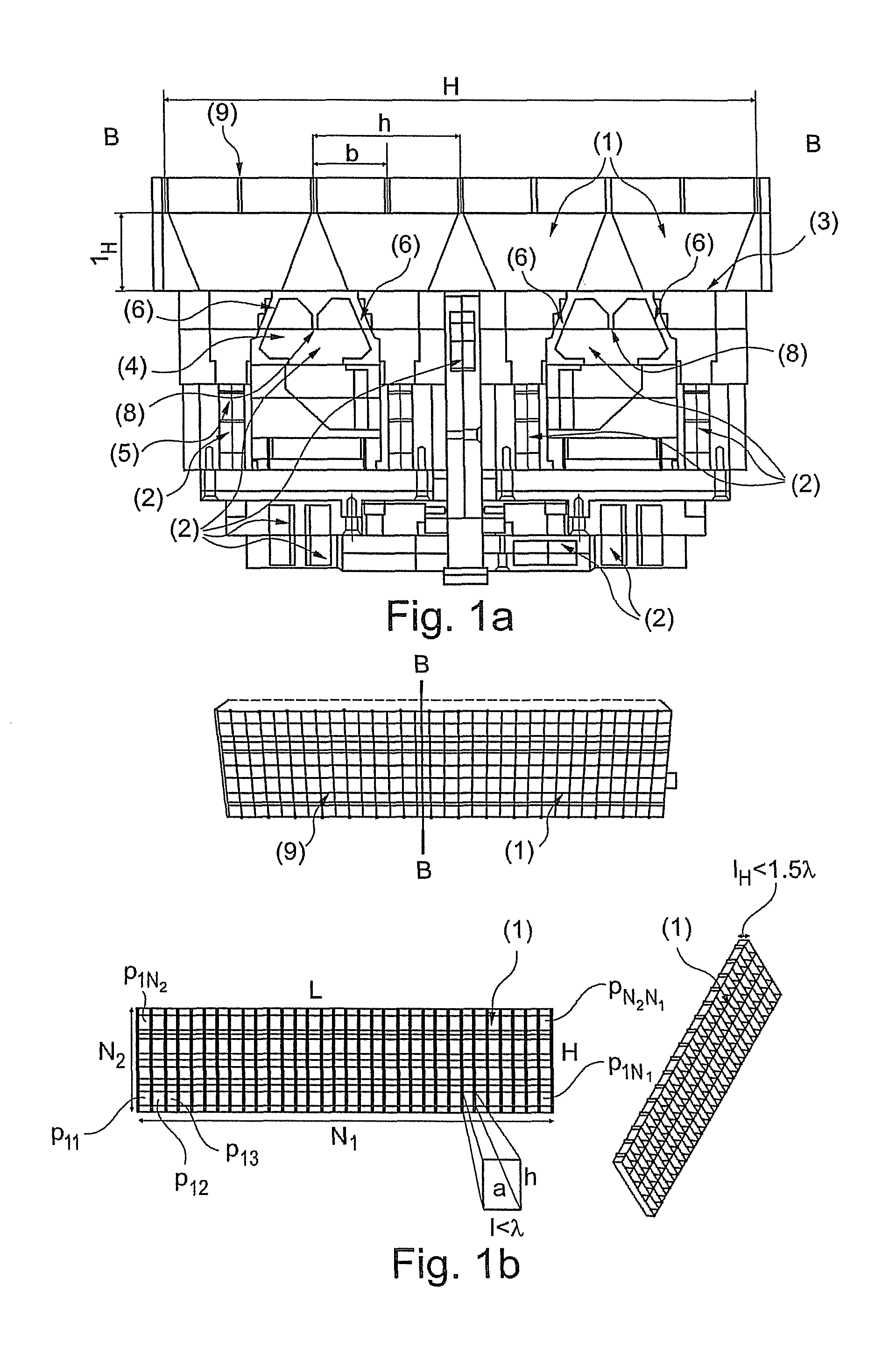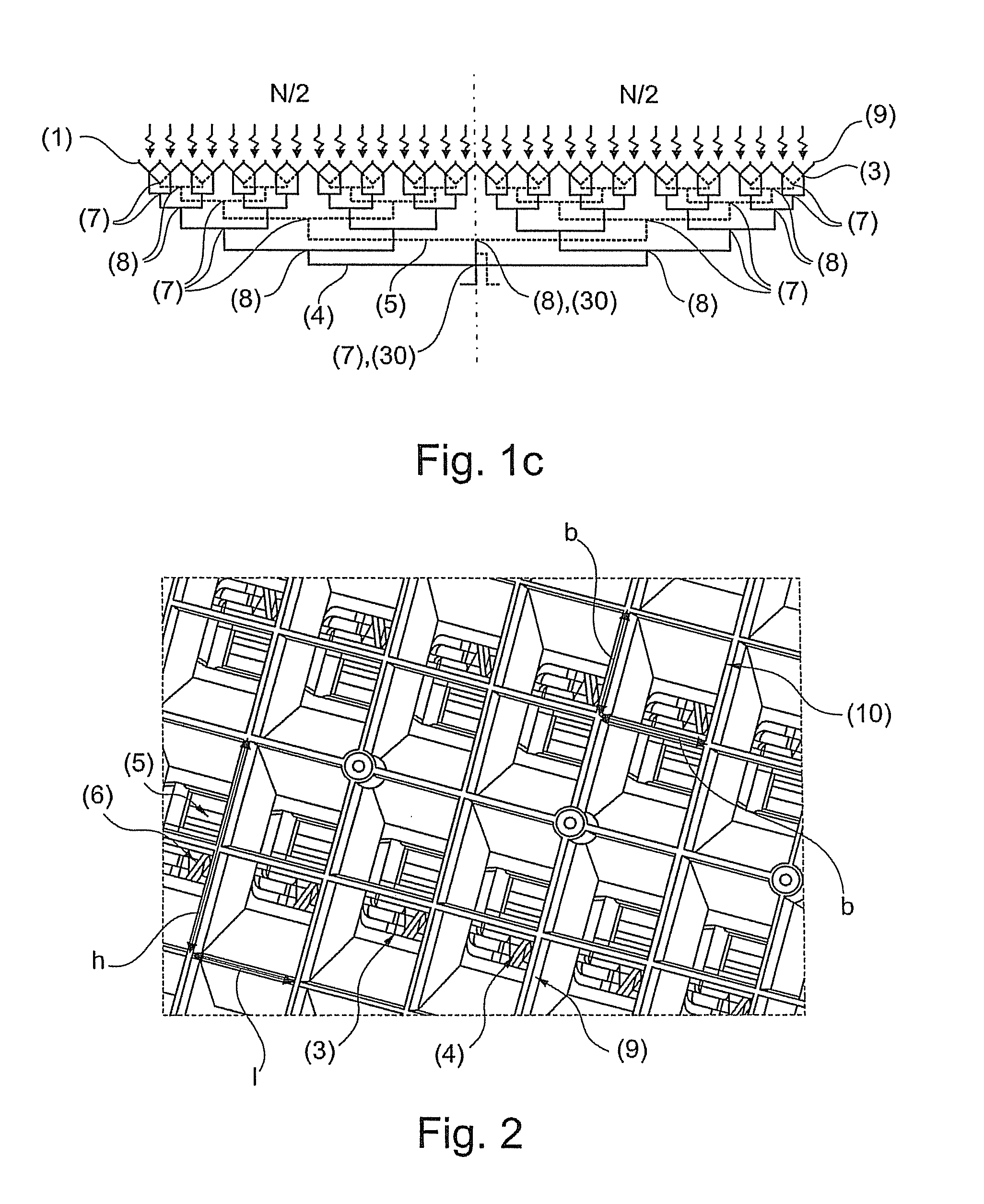Broadband antenna system for satellite communication
a satellite communication and antenna system technology, applied in the direction of antenna arrays, basic electric elements, electric devices, etc., can solve the problems of extreme requirements, lack of suitable antennas, directional, wire-free data communication with satellites,
- Summary
- Abstract
- Description
- Claims
- Application Information
AI Technical Summary
Benefits of technology
Problems solved by technology
Method used
Image
Examples
Embodiment Construction
[0029]FIGS. 1a-c illustrate one preferred design of the antenna system according to the invention. The antenna for broadband satellite communication, in particular for mobile applications, consists of an array of primary horn antenna elements (1) which are connected to one another by a waveguide feed network (2), wherein the antenna consists of a number N=N1×N2 of primary horn antenna elements where N1>4 N2, N1 and N2 are even integers, the total aperture area A of the antenna is A=L×H, where L≧4 H and L1λ, where λ is the minimum free-space wavelength of the electromagnetic wave to be transmitted or to be received, the primary horn antenna elements allow the reception and the transmission of two orthogonal linear-polarized electromagnetic waves in that they have a rectangular aperture area a=l×h where l3), where L=N1 l, H=N2 h and A=N1×N2×l×h=L×H, and the primary horn antenna elements (1) are fed directly at their output (3) via rectangular waveguides (4, 5) such that one of the ort...
PUM
 Login to View More
Login to View More Abstract
Description
Claims
Application Information
 Login to View More
Login to View More - R&D
- Intellectual Property
- Life Sciences
- Materials
- Tech Scout
- Unparalleled Data Quality
- Higher Quality Content
- 60% Fewer Hallucinations
Browse by: Latest US Patents, China's latest patents, Technical Efficacy Thesaurus, Application Domain, Technology Topic, Popular Technical Reports.
© 2025 PatSnap. All rights reserved.Legal|Privacy policy|Modern Slavery Act Transparency Statement|Sitemap|About US| Contact US: help@patsnap.com



